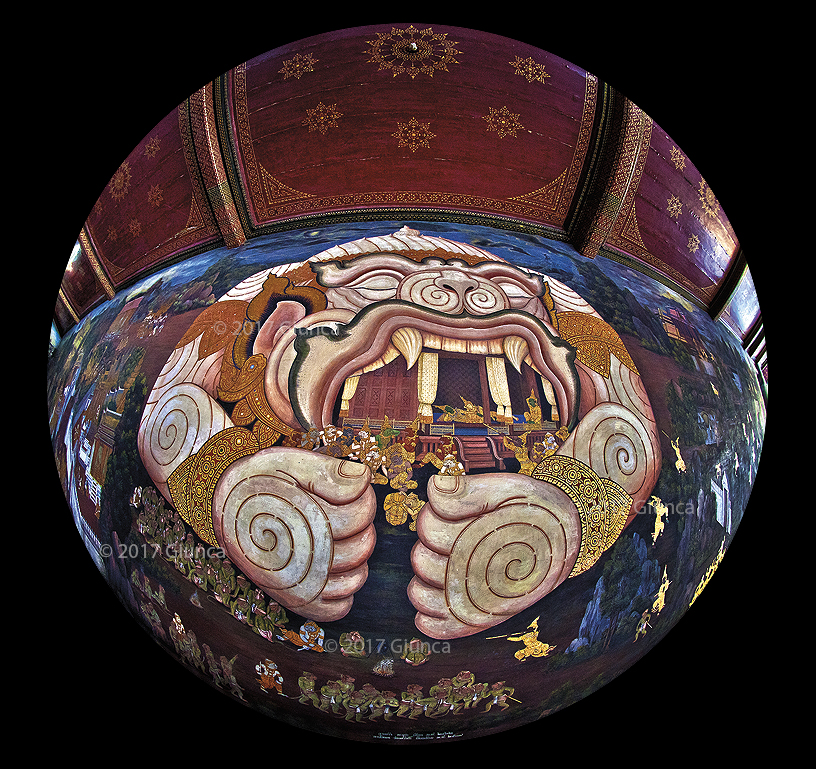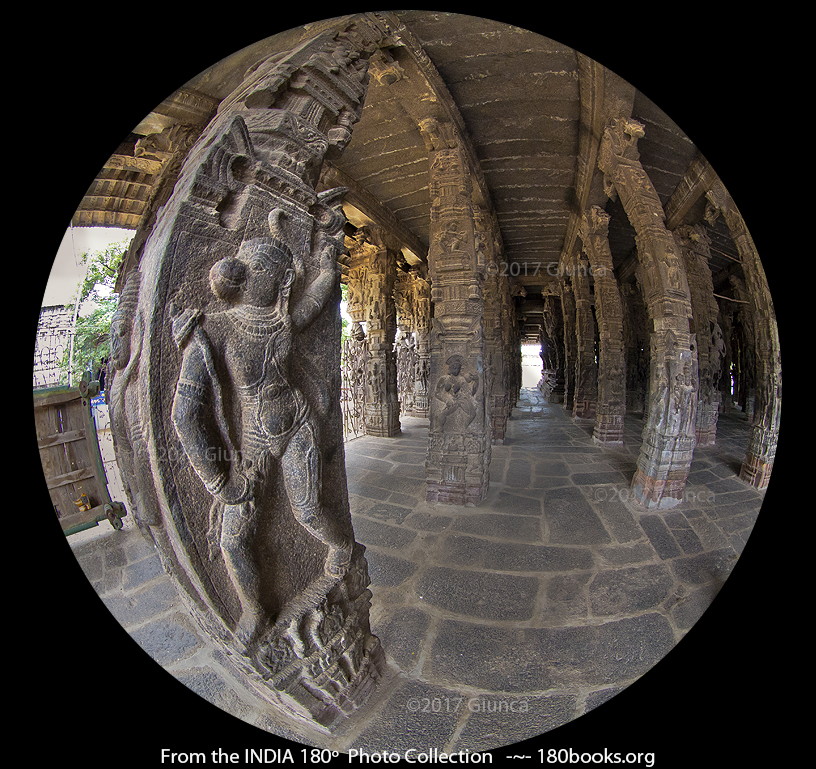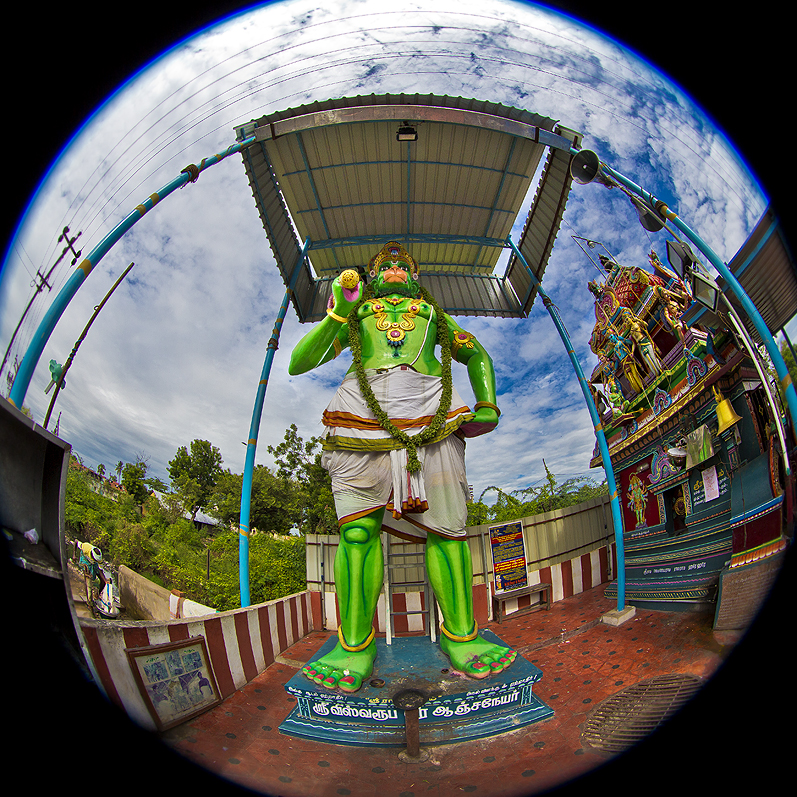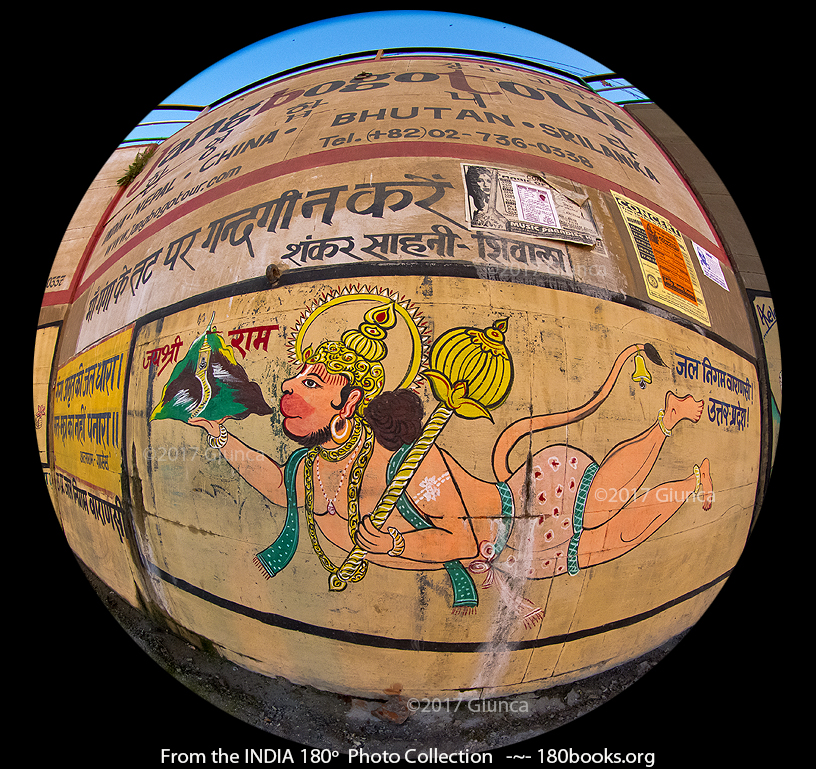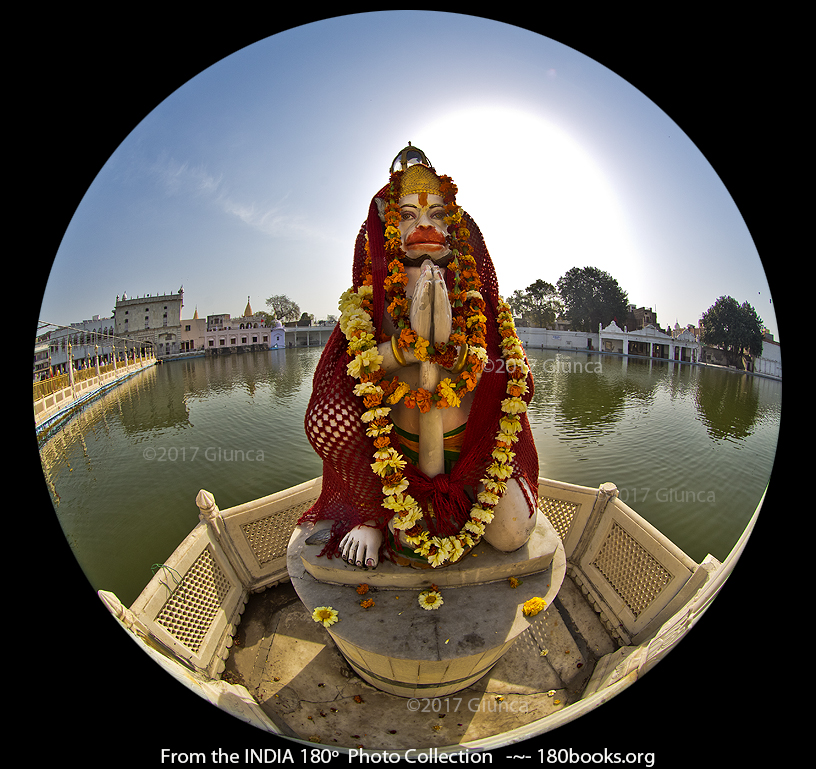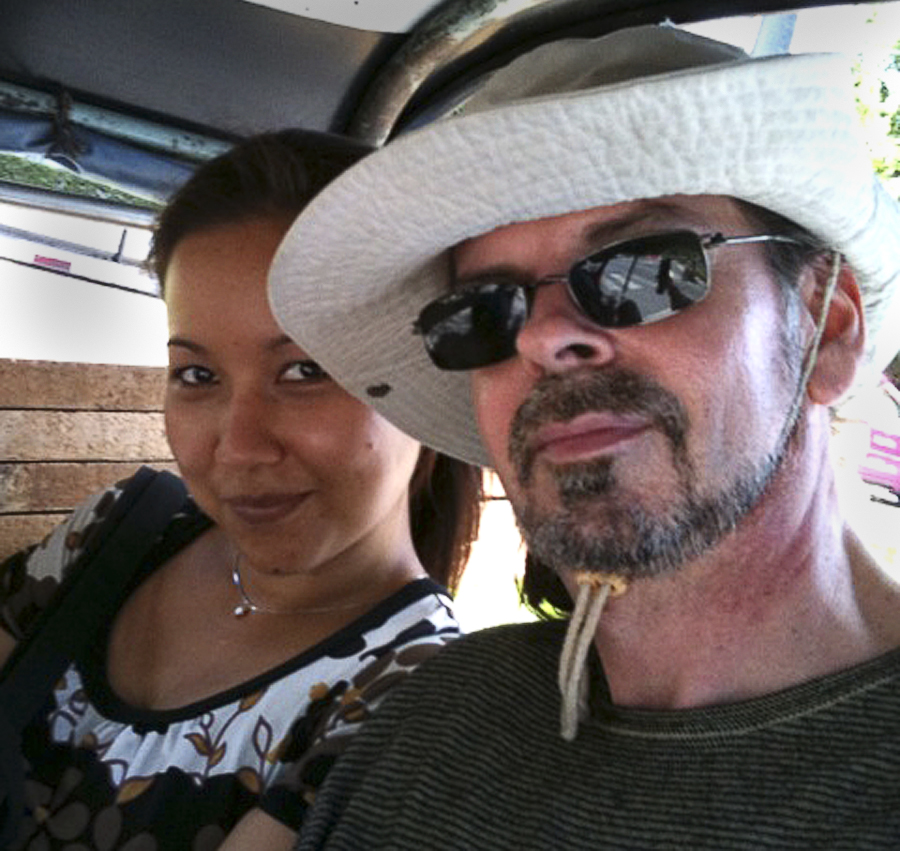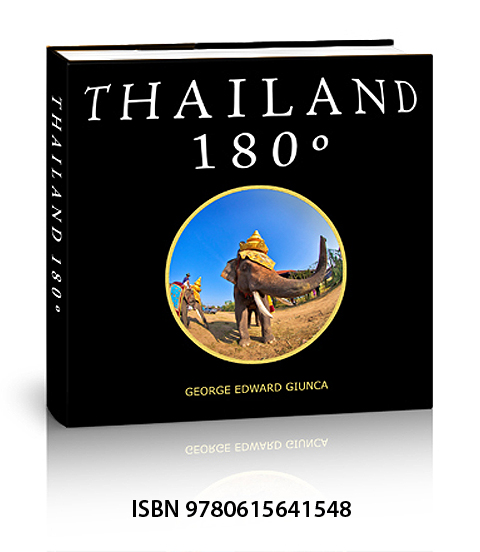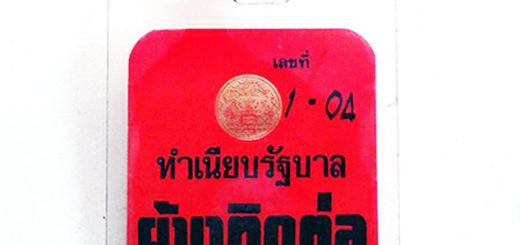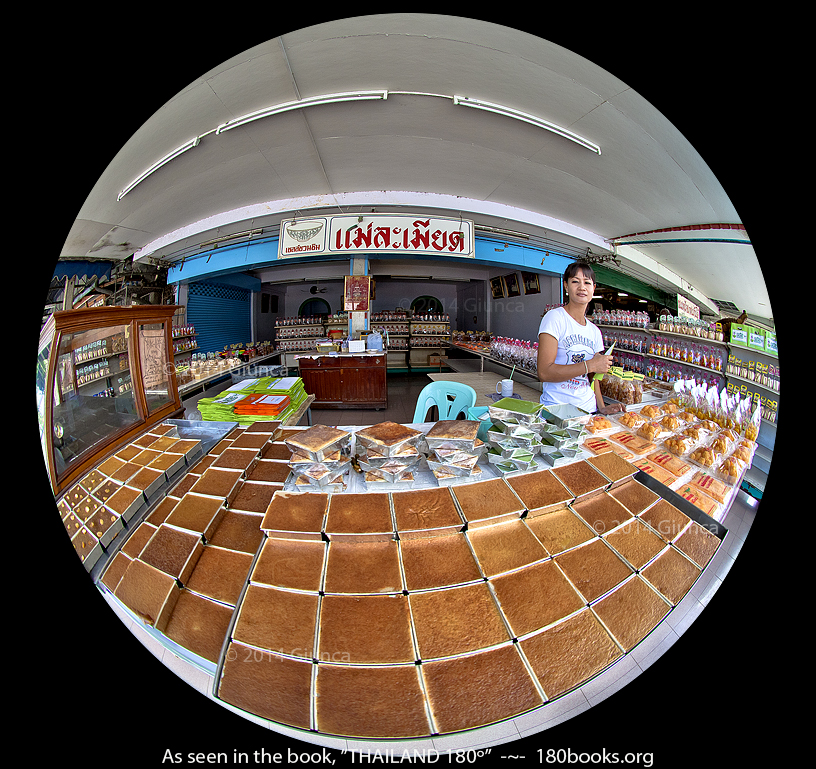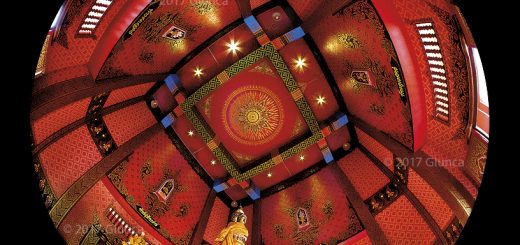Jai Hanuman! ~ जय हनुमान: हनुमान जयंती ~ ใจ หนุมาน!
Last week, we blogged about Shri Ram who was the hero of the ancient epic poem of India, Ramayana (रामायणम्), this week is Hanuman Jayanti or Hanuman’s birthday that is celebrated annually throughout India. I should mention that in some parts of India the holiday is celebrated towards the end of the year.
Believe me! All over India, everyone knows ‘Hanuman’! ~and the same can be said of Thailand and many countries in Southeast Asia. Hanuman appears in both the Ramayana epic of India as well as in the Thai version called “Ramakien.” Additionally, it has been made into a much-beloved children’s cartoon, and you may hear boys shouting “Jai Shri Rama” as they play and recite Hanuman’s famous cry. I prefer this animated movie with English subtitles.
วันนี้ประจวบเหมาะพอดี วันหนุมานชยันตี หรือ วันคล้ายวันกำเนิดหนุมาน จากมหากาพย์รามายณะ (रामायणम्) ที่ยิ่งใหญ่และเป็นหนึ่งในวรรณคดีโบราณที่ยาวที่สุดในโลกตามที่กล่าวถึงในบล็อก พระรามเมื่อสัปดาห์ที่แล้ว
ทั่วทั้งดินแดนภารตะคงไม่มีใครที่ไม่รู้จัก “หนุมาน” รวมทั้งคนไทยและตลอดจนภูมิภาคเอเชียตะวันออกเฉียงใต้ต่างก็รู้จักหนุมานเป็นอย่างดี ซึ่งแต่ละประเทศก็บรรยายถึงลักษณะของหนุมานแตกต่างกันไป
The Ramakien epic was first scribed during the Ayutthaya period in the 17th century. Perhaps the most familiar version was partly rewritten by King Rama I (1726–1809). It was also during the reign of Rama I that the walls of the Wat Phra Kaew, the Temple of the Emerald Buddha, were lavishly decorated with murals depicting the Ramakien. In the scene shown in the painting above, Hanuman protects Rama, Sita, and the whole village by taking them into his mouth for safe keeping. You may notice some tour buses in Thailand are decorated with airbrush paintings of Hanuman as well, as we pointed out in our blog about Thailand’s colorful transportation.
บทละครเรื่องรามเกียรติ์ มีมาแต่สมัยกรุงศรีอยุธยา ในแผ่นดินสมเด็จพระนารายณืมหาราช ต่อมาในสมัยรัตนโกสินทร์ พระบาทสมเด็จพระพุทธยอดฟ้าจุฬาโลกมหาราช ทรงพระราชนิพนธ์และรวบรวมเรื่องให้มีความสมบูรณ์ และได้กล่าวถึงลักษณะหนุมานตอนกำเนิดไว้ดังนี้
“…ครั้นได้ศุภฤกษ์ยามดี พระรวีหมดเมฆแสงฉาน
ปีขาลเดือนสามวันอังคาร เยาวมาลย์ก็ประสูติโอรส”
“…บัดนั้น วายุบุตรวุฒิไกรดั่งไกรสร
ครั้นออกจากครรภ์มารดร ก็เหาะขึ้นอัมพรด้วยฤทธา ฯ
ลอยอยู่ตรงพักตร์พระชนนี รัศมีโชติช่วงในเวหา
มีกุณฑลขนเพชรอลงการ์ เขี้ยวแก้วแววฟ้ามาลัย
หาวเป็นดาวเดือนรวีวร แปดกรสี่หน้าสูงใหญ่
สำแดงแผลงฤทธิ์เกรียงไกร แล้วลงมาไหว้พระมารดา”
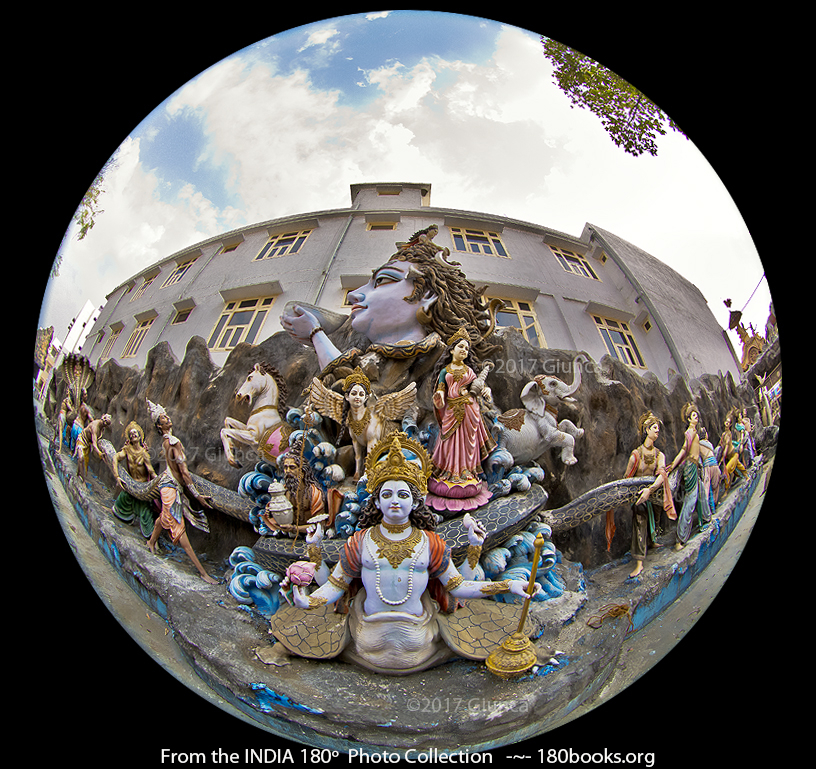
A magnificent, nearly block-log sculpture of the great Hindu mythological event, the Churning of the Ocean of Milk.
Who is Hanuman? – หนุมาน คือใคร?
We’ve heard that Hanuman is a son of the God of Wind according to Hindu mythology, but in the Ramayana, he has a father named Kesari, so who is his real father? — This gets a bit complicated as each ancient text has a different story about the exact circumstance of his birth. The answer is that Hanuman is the 11th avatar of Lord Shiva who appeared later after the Churning of the Ocean of Milk (Samudra Manthan समुद्रमन्थन) in a sequence of events that followed. The God of Wind, Vayu, is his spiritual father, but he was raised as a son by Kesari, who was a Vanara. What’s a Vanara, you ask? *Sigh* I suppose you could think of them as a race of creatures somewhat like the Western Tarzan character. They are deep jungle dwellers that have some ape-like characteristics and skills. This is why Hanuman appears as half-ape, half-human in artwork.
เราเคยได้ยินว่า หนุมานเป็นบุตรของพระพาย แต่ในมหากาพย์รามายณะ หนุมานก็มีบิดาอีกท่าน ชื่อ เกศรี แล้วใครล่ะ คือบิดาของหนุมานกันแน่!? — คำตอบ คือ หนุมานเป็นรุทธอวตารปางที่ ๑๑ ของพระศิวะ ซึ่งเกิดขึ้นภายหลังเหตุการณ์การกวนเกษียณสมุทร มีพระพายเป็นพระบิดาในทางจิตวิญญาณ และเกศรีเป็นบิดาผู้เลี้ยงดูมาตั้งแต่กำเนิด เหตุแห่งการกำเนิดของหนุมานดูจะสลับซับซ้อนมากเพราะแต่ละตำราที่มีมาแต่โบราณกาลก็เขียนเรื่องราวต่างกันไป
คำไทยแปลความหมาย “วานร คือ ลิง” แต่ในศัพท์ของคำว่า “วานร หรือ Vanara” มีทฤษฎีหนึ่งกล่าวไว้ว่ามาจากคำว่า “วนา” แปลว่า “ป่า” และคำว่า “นร” แปลว่า “คน” กล่าวคือเหมือนว่าเป็นคนที่อาศัยอยู่ในป่าลึกดึกดำบรรพ์ แต่มีบุคลิกลักษณะและทักษะคล้ายลิง จึงอาจกล่าวให้เข้าใจได้ง่ายว่าเป็น “มนุษย์วานร” ซึ่งในทางจิตรกรรมที่เล่าเรื่องรามายณะต้องการสื่อให้เห็นถึงคนกลุ่มนี้ และหากจะเขียนภาพให้เป็นมนุษย์เสียทีเดียวคงไม่ได้ จึงเขียนหรือวาดภาพสื่อออกมาให้มีลักษณะรูปร่างหน้าตาเป็นลิง จนพวกเราทั้งหลายเข้าใจไปว่าหนุมานเป็นลิง อันที่จริงท่าน “หนุมานเป็นมนุษย์วานร” และที่อินเดียก็นับถือท่านในฐานะวานร ไม่ใช่ ลิง นะคะ!
Hanuman in the Ramayana – หนุมาน ในมหากาพย์รามายณะ
Although Hanuman is not mentioned in the original Ramayana, he was referred to in the Rigveda and other ancient Indian literature, including Mahabharata. As a giant and well-educated man/monkey, he became known for his strength, energy (prana) and devotion to Lord Rama. Not only did he help Lord Rama in the fight against Ravana in later versions of the Ramayana, but he was also the first to find Rama’s kidnapped wife Sita and found ways to do the seemingly impossible.
ต้นฉบับมหากาพย์รามายณะของท่านฤๅษีวาลมีกิ ไม่มีหนุมาน แต่ฉบับคัดลอกและแปลต่อกันมาได้เพิ่มเรื่องราวของหนุมานเข้าไป จนถูกกล่าวถึงในคัมภีร์ฤคเวทและคัมภีร์ต่างๆ ในเรื่อยมา รวมทั้งมหากาพย์มหาภารตะก็กล่าวถึงหนุมานวายุบุตรเช่นกัน บทบาทของหนุมานมีความสำคัญมากขึ้นไปอีกเมื่อมีการกล่าวขานว่าเป็นรุทธอวตารปางที่ ๑๑ ของพระศิวะ หนุมานมีทั้งพละกำลังและพลัง ช่วยพระรามทำสงครามกับทศกัณฑ์จนได้ชัยชนะ อีกทั้งยังเป็นสาวกผู้นับถือพระรามตั้งแต่ลมหายใจแรกจนลมหายใจสุดท้าย
In one of my favorite scenes from the Ramayana, Hanuman flys to the Himalayas in search of the magical Sanjeevani plant to rejuvenate Rama’s brother Laxman after he was hit by the dreaded and usually fatal Shakti weapon. Hanuman has difficulty identifying the plant and returns in a single night carrying a mountain top covered with magical herbs, to make sure that he has the correct one. After taking the herb, Laxman fully recovers and returns to the battlefield the next day.
วีรกรรมของหนุมานที่หลายคนจำได้คือตอนเผากรุงลงกา แต่ก็ยังมีอีกตอนนึงที่ไม่มีปรากฏในรามเกียรติ์ แต่มีในรามายณะและเป็นที่เลื่องลือกันทั่วอินเดีย คือ ตอนหนุมานไปค้นหา “สัญชีวนี” อันเป็นสมุนไพรวิเศษที่มีสรพพคุณช่วยชุบชีวิตพระลักษมณ์คืนมา แต่หนุมานไม่สามารถระบุได้ว่าเป็นต้นไหน เลยยกมาทั้งภูเขาซึ่งเขาลูกนี้อยู่ในรัฐอุตตรขัณฑ์
When is Hanuman Jayanti? – วันเกิดหนุมาน ตรงกับวันไหน?
Hanuman Jayanti is celebrated in the month of Chaitra in Hindu Lunar calendar, on a full moon in late March or April. In different parts of India, Hanuman Jayanti is celebrated in different months on account of variations in the dates of the Hindu calendar that are followed by different states. For example, in Tamil Nadu and Kerala, Hanuman Jayanti is celebrated around December or January.
Hanuman Jayanti is the most auspicious time to worship this monkey-like god be blessed to inherit his great qualities of courage, self-control, devotion, intellect, sensory control, and humility. The celebrations and worshiping start early in the morning at a temple with offerings of red flowers, red sindur, betel nuts, bananas, and ladoos. Also, red Sindur from the offerings is applied to the feet of a Hanuman statue and the devotee’s forehead for good health, luck, strength, and courage. Recitations, fasting, chanting, hymns, music and shows are performed as well.
วันหนุมานชยันตี ตรงกับวันเพ็ญ เดือนไจตระ (Chaitra) ตามปฏิทินจันทรคติฮินดู หรือปลายมีนาคม – เมษายน ซึ่งเป็นช่วงฤดูใบไม้ผลิ (วสันตฤดู) ทั้งนี้ วันหนุมานชยันตีของแต่ละรัฐของอินเดียอาจมีการเฉลิมฉลองแตกต่างตามปฏิทินของตน เช่น รัฐทมิฬนาฑู ก็มีปฏิทินของชาวทมิฬ ส่วนรัฐเกรละ ก็มีปฏิทินมาลายาลัม เป็นต้น
วันหนุมานชยันตี ถือเป็นวันมหาฤกษ์ในการบูชาสักการะหนุมานในฐานะเทพองค์หนึ่งที่ไม่ได้มีแค่พลานุภาพเท่านั้น หากแต่หนุมานได้รับการยกย่องสรรเสริญในความกล้าหาญ, ความจงรักภักดี, มีสติปัญญา, มีความเฉลียวฉลาด และมีความอ่อนน้อมถ่อมตน โดยพิธีบูชาที่วัดจะเริ่มแต่เช้าตรู่เพื่อถวายดอกไม้สีแดง, ผง Sindur, หมากพลู, กล้วย และขนมลัฑฑูแก่หนุมาน แล้วก็จะนำผง Sindur นั้นเจิมบนหน้าผากและสวดขอพรให้ตนมีสุขภาพแข็งแรง โชคดี และมีความกล้าหาญอย่างท่านหนุมาน บางคนอดน้ำและอาหารตลอดทั้งวันพร้อมกับสวดภาวนา บางแห่งมีการสวดภาวนา, ร้องเพลงสรรเสริญ, และการแสดงเกี่ยวกับเรื่องราวองค์เทพหนุมาน
!!! Jai Hanuman ~ जय हनुमान ~ ใจ หนุมาน !!!
!!..คลิ๊กแผนที่..!! ดูภาพสวยๆ อ่านบล็อกสถานที่ท่องเที่ยวจาก THAILAND 180º ได้นะคะ อัพเดทเพิ่มเติมตลอดค่ะ
We had to eliminate the ability to comment from this wordpress site due to excessive spam. If you enjoyed this story, subscribe using the “Subscribe” button below, or visit our facebook fan page to comment Here
We’d LOVE to hear from you!
ผู้ติดตามอ่านบล็อก สามารถติดตามอัพเดทโพสต์บล็อกได้โดยสมัครสมาชิกที่บล็อกนี้ หรือ กดไลค์เฟสบุ๊คเพจของเราที่นี่ Here
Blog : Thai by Apisatha Giunca
Blog : English by George Edward Giunca
About the Authors
Photographer George Edward Giunca, and his Thai wife, Apisatha, have traveled around Thailand armed with a circular fisheye lens to create a photo essay on the rich cultural diversity, and abundant natural beauty of the Kingdom of Thailand. Fleeing from angry water buffaloes, slapping huge mosquitoes, watching exotic festivals and religious rituals, gorging on delicious spicy food, applying aloe vera cream to sunburned skin, wading through rice paddies, getting drenched to the bone by heavy monsoon rains, and gawking at breath-taking scenery; made it a journey of epic proportions! The result is the book, THAILAND 180º. Later, they traveled extensively through Myanmar, Malaysia, and India, gathering a massive collections of 180º photos. They currently live in Chiang Mai where they continue to blog and are now working on a CHIANG MAI 180º book.
Here’s How to Order Your Copy of THAILAND 180º Collectors EditionToday!
In Thailand —>>>http://www.thailand180.com/thaiorder.html
The Rest of the world: We are offering our book on Amazon.com, below list price and I’ll pay for the shipping within the United States! http://amzn.to/1knDPRR
Not Familiar with Our Book???
This show details the origin of 180 Books, a series of art/travel books illustrated with a circular fisheye lens. By using infographics, pictures from our THAILAND 180º book, and never seen before images from our vault, we’ll demonstrate this unique lens and present our unique books.
Also, because there’s nothing to watch on TV, here’s a trailer about our book, “THAILAND 180”
Above is an interactive map of Thailand. If you click on a marker it reveals a photo from our THAILAND 180º book and a link to our blog article about the photo. Go Ahead~ Start Exploring ~Have Some Fun!


